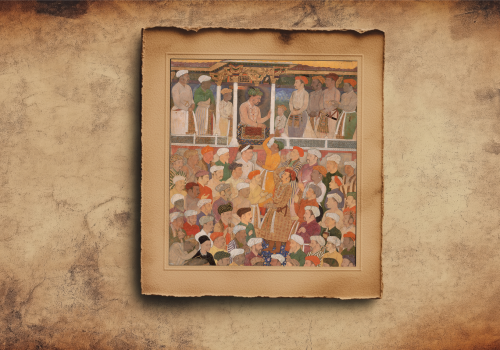VASAKHA SINGH (1877–1957)
Vasakha Singh, one of the Ghadr leaders, was born on 13 April 1877 in Dadehar, a village in the Amritsar district of Punjab. His parents, Dial Singh and Ind Kaur, were a devout couple. One of his ancestors, Mohar Singh, is said to have received the rites of amrit at the hands of Guru Gobind Singh himself. Vasakha Singh grew up in a religious environment. As was customary in those days, he received his early education at the village gurdwara and learned to read Sikh texts. He took Sikh initiatory rites at the age of twelve. He was married to Ram Kaur at a young age, but she passed away within four years. Vasakha Singh chose not to remarry.
At the age of nineteen, he joined the army but left in 1907 to travel to China. From there, he moved to the United States, where he partnered with Baba Jawala Singh of Thatfian on a 500-acre farm. Using the farm’s income, Vasakha Singh and Jawala Singh established the Guru Nanak Educational Society to support needy Indian students studying in America. He was also one of the builders of the Gurdwara at Stockton.
Role in the Ghadr Movement
When the first issue of Ghadr, the weekly organ of the revolutionary Ghadr Party, reached Indian workers on California farms, it stirred deep emotions. Vasakha Singh attended the party meeting in Sacramento on 31 December 1913 and was elected to the central executive committee. Responding to the party’s call, he returned to India to participate in the planned armed rebellion.
However, upon arriving in Madras on 7 January 1915, he was arrested and placed under house arrest in his village. Despite this, he maintained his ties with the Ghadr Party. When the rebellion plot was leaked to the British by a spy, Vasakha Singh was arrested along with other Ghadr leaders. He was tried in the Lahore Conspiracy Case I (1915) and, on 13 September 1915, sentenced to life transportation and forfeiture of property.
While imprisoned in the Andamans, he went on a hunger strike for over a month to protest the mistreatment of political prisoners. After his release in 1920, as part of a general amnesty for certain political prisoners, he returned to his village in poor health but continued his active role in the freedom struggle. He helped form the Desh Bhagat Parivar Sahaik Committee to support political prisoners and was elected its president.
Later Life and Contributions
In 1931, Baba Vasakha Singh’s movements were restricted to Amritsar, and in 1932, he was detained in his village for two years. He was imprisoned again in 1940 and 1942. Baba Vasakha Singh was a revered figure in Sikh piety. He led a jatha of 100 volunteers to court arrest during the Guru ka Bagh Morcha. He was one of the Panj Piaras during the karseva (cleansing) of the holy sarovar at Tarn Taran on 10 January 1931.
He was also among the Panj Piaras who laid the foundation stone of the new Gurdwara Panja Sahib building on 14 October 1932. In 1934, he was honored with the position of Jathedar of the Akal Takht in Amritsar. Baba Vasakha Singh passed away in a hospital in Tarn Taran on 5 December 1957.
References :
1. Jas, Jaswant Singh, Baba Visakha Singh. Jalandhar, 1991
2. Ghumman, Bikram Singh, GhadariBaba Visakha Singh. Amritsar, 1982
3. Deol, Gurdev Singh, Ghadr Parti ate Bharat da Qaumi Andolan. Amritsar, 1970







